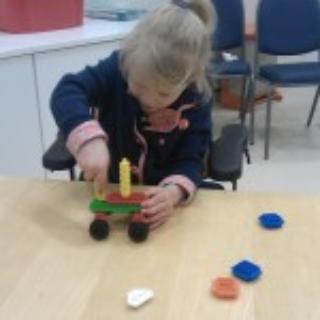Play therapy study

This study was funded by WellChild and Newcastle University
Can play at home improve hand function in hemiplegia?
Why did we do this trial?
Unilateral cerebral palsy (hemiplegia) is the commonest form of cerebral palsy. It affects thousands of children in the UK. As there is currently no cure, improving hand function through therapy is important.Recently there has been much interest in a brain network called the “mirror neuron system”. You activate this when moving but also when watching the same movement performed by others. We know that careful watching and copying are an important way of learning new activities.
We wanted to see whether adding “watching and copying” into therapy would improve hand function more than repeated practice of movements alone. We also wanted to develop a play-based therapy that parents/carers could use at home.
Who did the work?
PhD student Emma Kirkpatrick, Senior Paediatric Occupational Therapist Janice Pearse and Paediatric Neurologist and Researcher Anna Basu (with statistics advice from Peter James) - at Newcastle upon Tyne, UK
What did we do?
We developed a series of play activities useful for children with hemiplegia. For each game or toy, one set of instructions focused on watching and copying a parent’s moves. The other set focused on repeated independent practice, with the parent supporting rather than repeating the activity.
70 children aged 3-10 years took part in the trial in two random groups. Everyone followed a therapy programme for 3 months. This consisted of 15-minute sessions 5 days a week. All children took part in the same range of assessments.
What did we find?
At 3 months, BOTH groups had improved. However, there was no difference in the improvement of hand function between the two groups.
What does it mean?
Watching movements before copying them does not seem to create better results than repeated practice at home with parents. However, play activities with parents, which focus on particular hand movements, do lead to small but significant improvements in hand function.
What next?
Visit our new website for children age 3-10 years with hemiplegia and their families and therapists! FREE, downloadable ideas for activities aiming at getting the two hands working together in play. Activities searchable by therapy goals. Enjoy!!